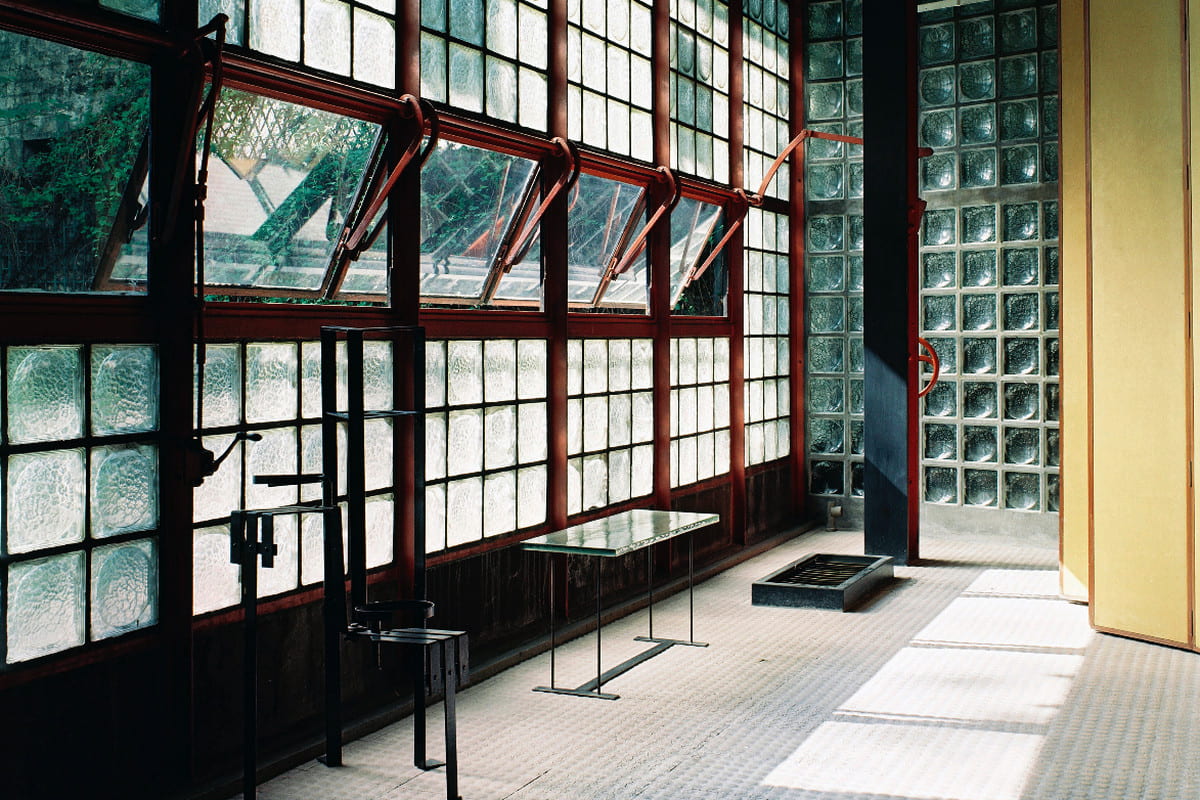The Maison de Verre caught my eye by the use of glass and the way that much of the home was inspired by a boat. It gives off the idea of steampunk-esc using different pulls and lots of metal. I thought the interior space was very well designed, modern yet, rustic. It reminds me of the Glasgow school that we studied back in week 6. With the second floor opened with the ability to look down at the first and tall ceilings with large windows (or an entire wall of glass.)
You can see different buildings and architect styles within the Maison de Verre Paris including aspects from Bruno Taut’s Glass Pavilion; with the glass bricks.
I also thought that it was very interesting that the original owner was a doctor who had his office located within the home. So the structure had a dual-use; as a residential building as well as a workspace when needed. Does this change how the Maison de Verre was designed? Did the architects struggle with this request? Should home and work be separated from each other completely?
Glass House vs Maison de Verre
When thinking about glass architecture and how it can make the interior vulnerable, what is the difference between Philip Johnson’s Glass House and the Maison de Verre? Both have glass exteriors however you can’t see clearly through the Maison de Verre. Does this change how the interior feels? Do these homes relate to each other in a way that explains their daily interior story?
These homes are more than just glass and steel connected; they create an interior space that changes by the way of light. Every moment is different than the last and won’t be the same in the future, do to the always-changing light.





